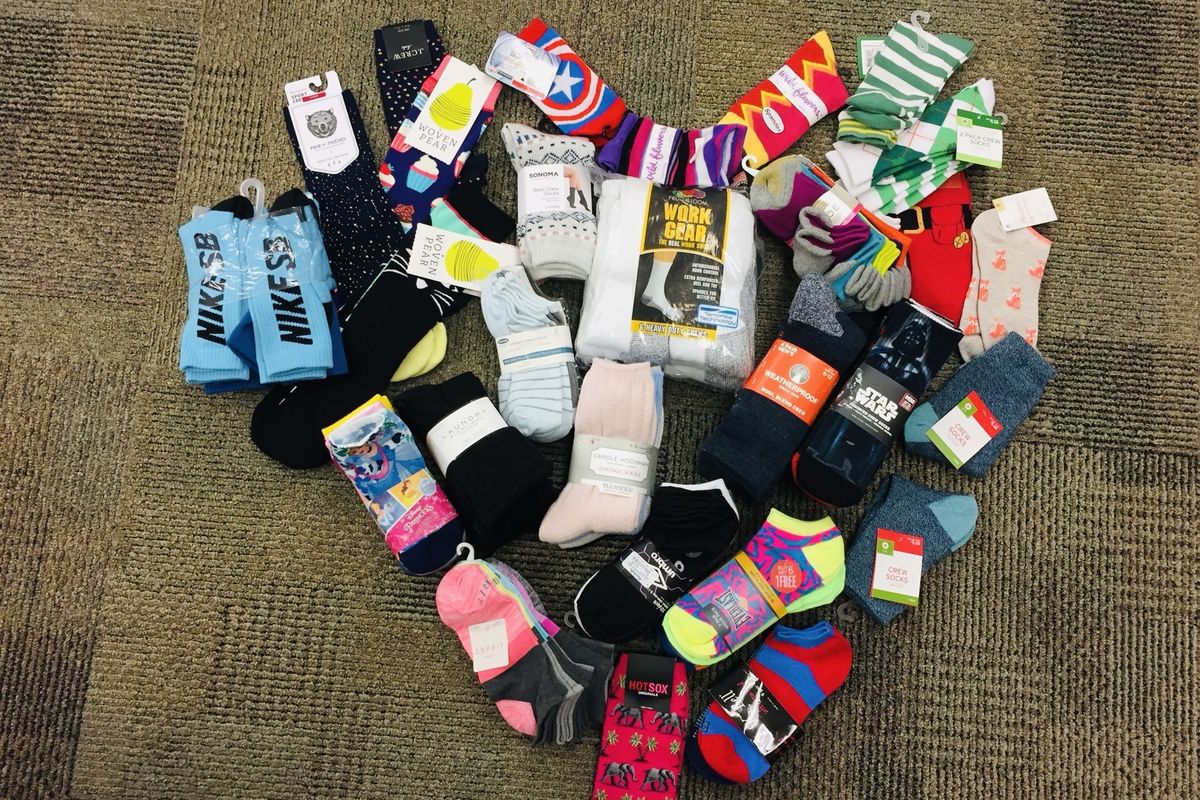He handed out socks on the streets. Then ‘Socktober’ took off.

The day Brad Montague learned a homeless shelter in West Tennessee had a desperate need for socks, he decided to find a solution.
“Socks are something that are often overlooked because they’re usually too well-worn to donate,” he said, explaining that it is common for unhoused people to get blisters and frostbite.
Montague, a writer and illustrator, knew he needed a catchy way to grab people’s attention to get them to donate socks.
It was 2010, and he took the problem to a dozen teens at the middle school where he volunteered in Henderson, Tennessee. Together, they came up with an idea: Socktober.
They asked the community to donate new socks, and they ended up with more than Montague could fit in his car.
“It was an uplifting and emotional experience to deliver the socks to the shelter,” he said.
Montague, 43, said he also handed out socks to homeless people he encountered on the streets, telling them, “Happy Socktober!”
“I thought that one year would be it, but then something happened,” he said. “Socktober began to spread.”
When he posted about the sock donations on social media, other Tennessee communities decided to hold their own Socktober events.
In 2011, he held a second Socktober drive in Henderson, which he promoted on Instagram.
Almost 15 years later, Socktober sock drives are now held annually in every U.S. state and several foreign countries, including Canada, Australia and India, he said.
“I couldn’t even guess how many new pairs of socks have been donated, but I know it’s in the millions,” Montague said.
“The beauty of it is that anyone can do it. Everyone needs socks, and they’re an easy thing to share with people.”
He said he did not turn Socktober into a nonprofit because he wanted others to feel free to run with the idea. His website has a place for people to locate homeless shelters in their own communities, and Montague offers tips for spreading the word and holding successful donation drives.
“Otherwise, I honestly don’t keep track of it,” he said. “I see myself now as a coach on the sidelines, cheering everyone on.”
Businesses and communities around the country now rally people to donate new socks every autumn, he said, but the idea has especially become popular with school groups.
In Bartlett, Tennessee, special education teacher Rachel Taylor oversees a sock drive every year at Elmore Park Middle School. Students have contributed about 10,000 pairs of new socks to a men’s shelter and a crisis shelter for women and children over the past eight years, she said.
“It’s so much more than just socks,” Taylor said. “Socktober signifies love, generosity and joy for me every year.”
At Ridges Elementary School in Sherwood, Ore., students have gathered new socks to donate every autumn since 2014, said Lindsay Walker, a second-grade teacher.
“I’ve had students run hot cocoa and cider stands and use their money to buy socks,” she said. “Others have collected cans and bottles to get money, and some have done chores.”
“They learn gratitude and empathy, and they will probably never look at a pair of socks in the same way again,” Walker added.
Anderson Brown, a fifth grader at the school, said he looks forward to Socktober every fall.
“We should show that we care about everybody, no matter what,” said Anderson, 11.
Jill Oltmon, an eighth-grade teacher at Crete Middle School in Crete, Neb., said her students make Socktober a friendly competition every year.
“They create sock bins to collect the socks in and commercials to air on the morning announcements,” Oltmon said, explaining that they have donated almost 2,000 pairs of socks to area homeless shelters, church charities and school backpack programs.
Montague said he is deeply grateful to everyone who continues the Socktober tradition.
“There are challenges and darkness in the world, but there is also another story happening that involves the quiet work of thousands,” he said.
“Everyone needs socks, but that’s actually just a place to begin,” Montague said. “Socks can lead to getting someone a warm jacket or to serving someone a hot meal. The possibilities go on and on. Caring is contagious that way.”